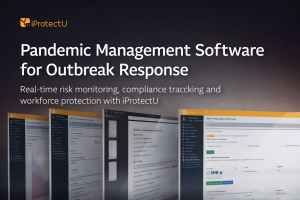Negative Effects of Exposure to the Cold
Exposure to the cold can lead to a range of negative effects, from hypothermia and frostbite to decreased dexterity, reduced alertness, and increased susceptibility to injuries. It is important for employers and employees to be aware of the hazards and take appropriate precautions to ensure a safe and healthy work environment.
Employers have a legal obligation to provide a safe and healthy workplace for their employees, and this includes protecting them from cold stress.

Employer Responsibilities
Conduct a risk assessment: Conduct a suitable and sufficient risk assessment to identify and evaluate the potential hazards of working in cold weather. Think about factors such as the type of work, outdoor exposure, wind chill, and the overall thermal environment.
Train workers: Provide training to employees on the hazards of cold stress, including the signs and symptoms of hypothermia and frostbite. Educate them on preventive measures and encourage open communication about any concerns. Signs and Symptoms of hypothermia include shivering, slurred speech, confusion, loss of coordination, drowsiness, weak pulse. Frostbite may present as numbness or tingling in extremities, skin discoloration, blistering.
Provide suitable clothing: Supply employees with appropriate personal protective equipment (PPE) for cold weather, including warm clothing, insulated boots, gloves, and headwear.
Ensure warm workspaces: Maintain indoor workspaces at a comfortable temperature, ideally between 16°C and 20°C. Provide heated rest areas for outdoor workers and ensure they have access to warm beverages.
Schedule regular breaks: Schedule breaks to allow workers to warm up, especially when they may be engaged in strenuous activities. Encourage employees to seek shelter in heated areas during breaks.
Employee Responsibilities
Dress appropriately: Wear warm, layered clothing that covers exposed skin and protects against wind and moisture. Select moisture-wicking fabrics to avoid dampness and discomfort.
Protect extremities: Wear insulated boots, gloves, and headwear to prevent heat loss from extremities. Keep gloves dry and change them often should they become wet.
Stay hydrated: Drink plenty of fluids to maintain hydration, even if you are not thirsty. Cold temperatures can suppress thirst, but hydration is essential for proper body function.
Monitor for symptoms: Seek medical attention immediately if you suspect hypothermia or frostbite symptoms. Inform your supervisor if you experience any discomfort or feel unsafe working in cold conditions.
Take Breaks: Utilise regular breaks to warm up, refuel and rehydrate. Take advantage of heated rest areas and avoid prolonged exposure to cold temperatures. Eat regular meals to maintain energy levels.








